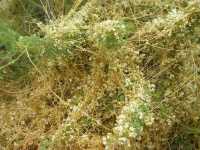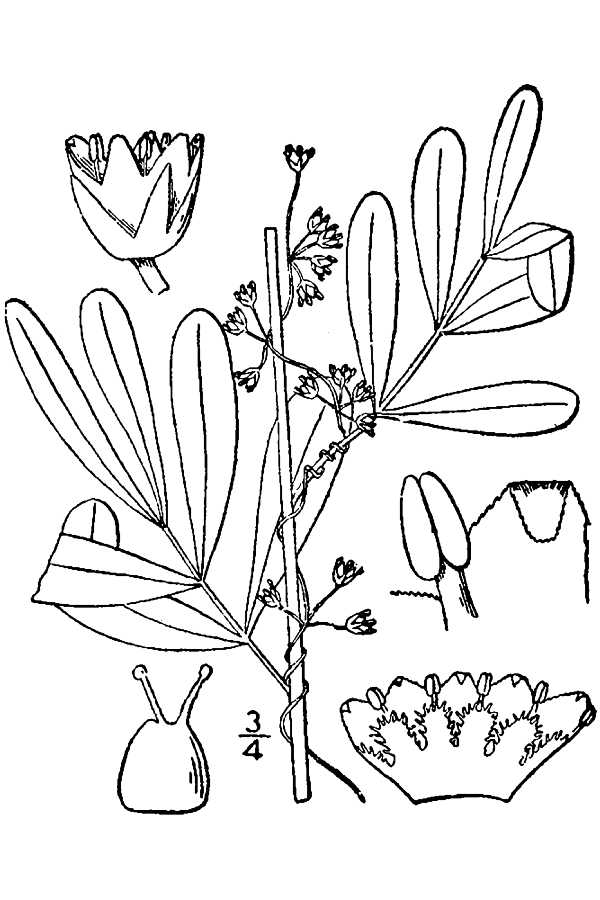|
|
 Plant Anthony Mendoza @http://swbiodiversity.org, Usage Rights: Attribution-Non-Commercial (CC BY-NC) |  Leaves and flowers USDA, NRCS. 2022. PLANTS Database | | | | |
|
Origin:
Native
Life Cycle:
Perennial
General Desc:
Parasitic vine with twining, matted mass of thread-like yellowish stems; leaves none to scale like. It lives on the juices of the host plant; hosted by Acacia, Prosopis, Condalia, Datura, Solidago, Hymenoclea and Baccharis among others.
Identification notes: Twining parasitic vine; flowers 5-petaled in rounded clusters, shallowly bell-shaped, petals triangular; flower fleshy with nipple projections; scale-like appendages at the base of the flower; capsule without a terminal lid, 4-seeded.
Height:
Variable depends on host
Habitat Description: Found on herbaceous plants in moist fields, river flood plains, in major washes, on roadsides and near agriculture below 5,000 feet.
Plant Communities:
Semidesert Grasslands, Riparian, Disturbed Areas
Elevation: Below 5000 feet
Color:
White
Shape:
Bell-shaped in round clusters
Tubular:
Y
Flowering Period:
Jul - Sep
Description:
Flowers 1/4 to 1/8 inch long, shallowly bell-shaped, in loose or compact clusters; fleshy, translucent-white; 5 petals, not overlapping; tips curved inward; the flower stalks as long or longer than the flowers; 5 sepals are similar to the petals.
Leaf Color:
Yellow-orange, green
Leaf Type:
Simple
Leaf Shape:
Triangular
Leaf Margin:
Smooth
Leaf Attachment:
Alternate
Leaves Clasp:
N
Hairs:
No
Spines:
N
Leaf Description:
Stems coarse, slender, often transparent or yellow-orange, green; leaves none to scale-like, generally narrow to triangular. Seedlings break contact with the ground and twine about host plant using suckers to absorb water and nutrients.
Fruit Type: Capsule
Fruit Notes: Round capsule with 4 seeds, 1/8 to 1/4 inch, sometimes with glands.
|
|